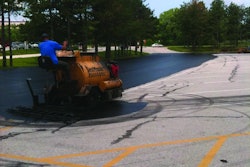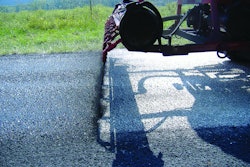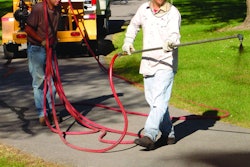There is finally some good news for our industry. As of this writing in mid-February, as part of its FY 2012 budget submission, the Obama Administration outlined a six-year, $556 billion surface transportation program. The highway program portion of the bill includes $257 billion that would be directed to investments in an enlarged, 220,000-mile "National Highway System." The NHS investment would be split nearly in half - one for a "fix-it-first" program to rehab existing NHS road surfaces and bridges; the other for a "flexible" program allowing states to direct funds to projects on any eligible federal-aid road.
Notice the "fix-it-first" part of that last paragraph.
Smaller budgets, higher material costs and deteriorating road conditions are putting the focus on pavement preservation techniques. Many state and local agencies are moving toward preservation treatments that offer lower unit cost and a way to stretch their dollars.
The emphasis on pavement preservation should be looked at as an opportunity. Let's face it – it's not going away. Both state and local agencies are relying heavily on these techniques to keep their pavements up to speed. And Obama's federal program is highlighting "fix-it-first."
Preservation techniques vary and include traditional mill-and-fills, chips seals, micro surfacing, crack treatments, thin overlays, cold or hot in-place recycling, soil stabilization and full-depth reclamation. According to the International Slurry Surfacing Association (ISSA), these processes have been proven to extend the life of roads, save money and have an environmentally sustainable impact.
Other industry associations also recognize that the emphasis on preservation isn't going away. Last summer, the National Asphalt Pavement Association (NAPA) and the Asphalt Recycling and Reclaiming Association (ARRA) signed a cooperative agreement aimed at doubling the rate of reuse/recycling of asphalt pavements within five years. Here at Asphalt Contractor, we've highlighted pavement preservation and its benefits for the last eight years.
With the economy still struggling, budgets being slashed and our roads crumbling, it may be time for your business to take a look at adding some pavement preservation techniques to your playbook if you don't have them already.
At NAPA's recent annual meeting in Orlando, there was a session titled, "Pavement Preservation: Where Does It Fit with Your Business?" The obvious answer is that it HAS to fit in some way. New asphalt pavement construction just isn't happening as much.
Kevin Kelly, with Walsh & Kelly, summed it up during the above-mentioned session like this, "If you're not pursuing preservation, you're missing a major opportunity."



















